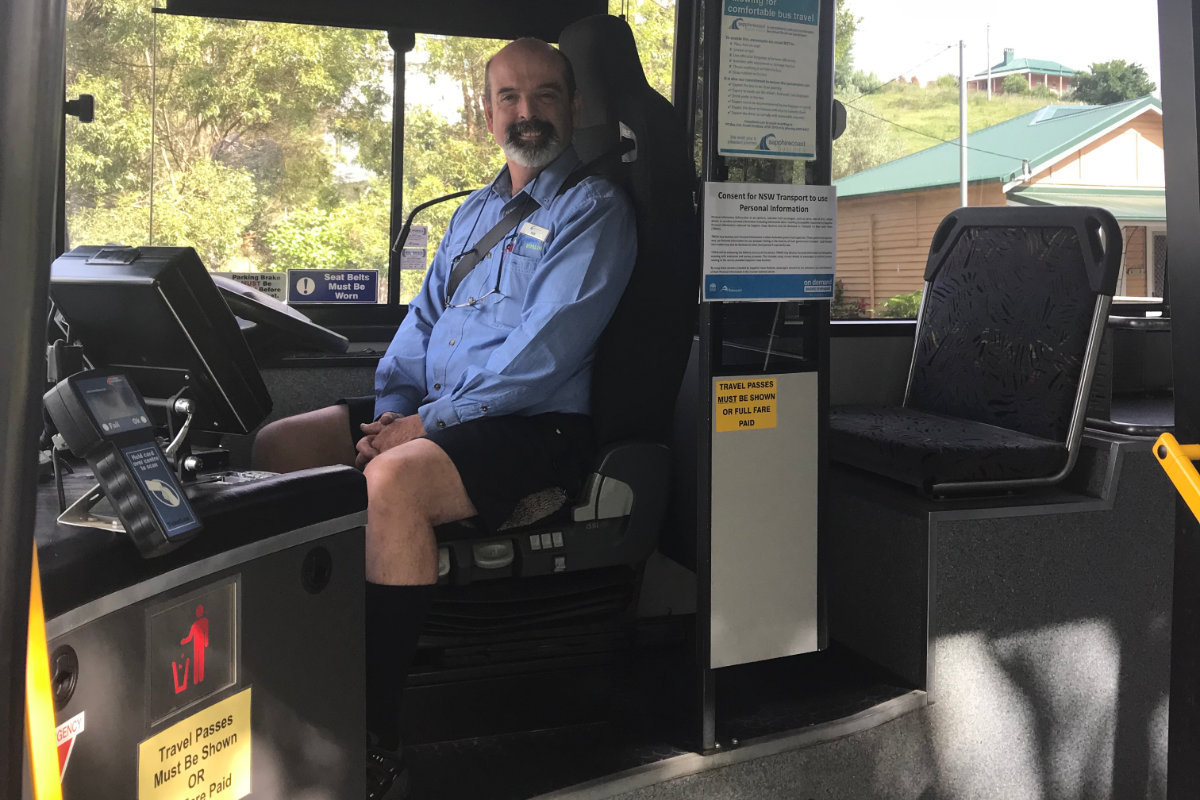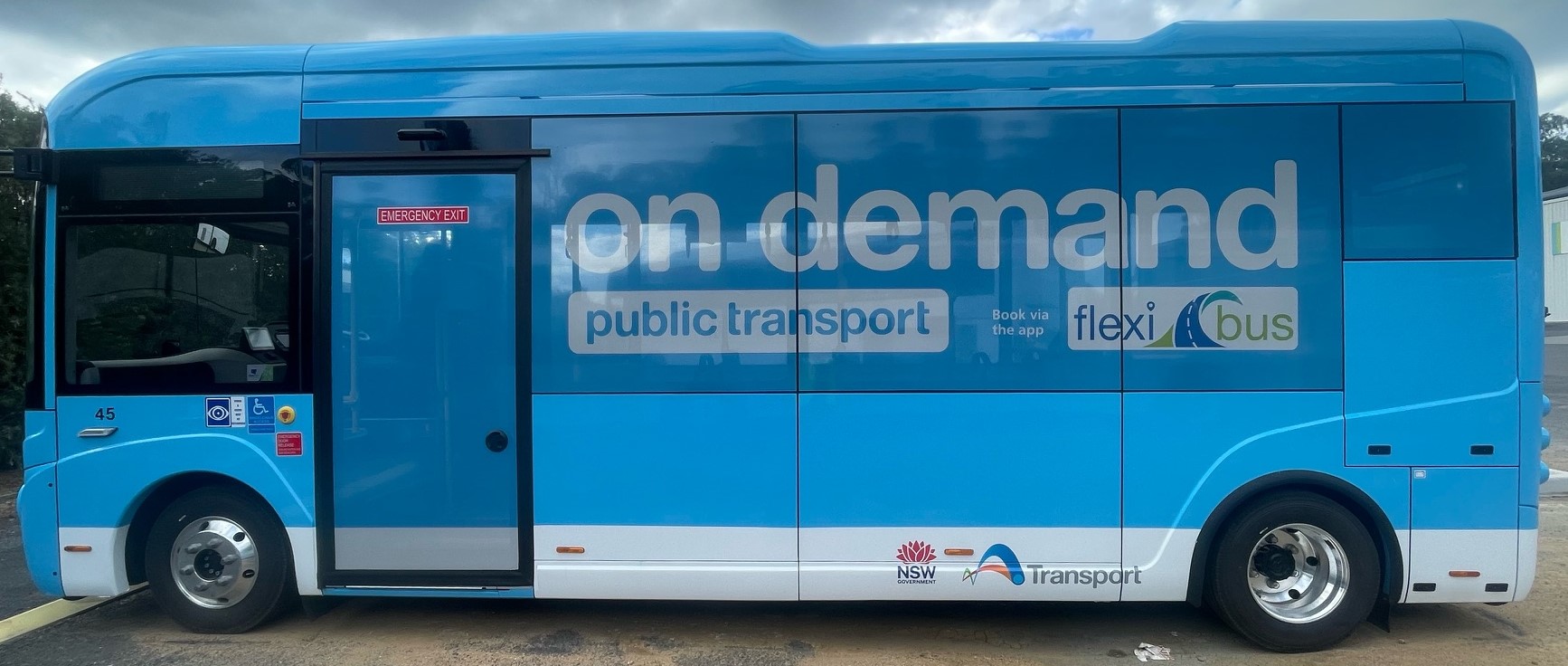Sapphire Coast Buslines provides professional public transportation services in the Bega Valley Shire along established routes. We strive to deliver high-quality, efficient services that exceed our clients' expectations. Our public bus service highlights our commitment to you, the customer, to continually improve the quality and dependability of our services.
FAQs
Yes, our drivers can sell you a ticket on the bus.
No, our drivers only accept cash. There are ways to travel without cash by using our SCB card or purchasing pre-paid tickets.
No, NSW Transport does not accept health care cards as proof of eligibility for half-price tickets. If you're a Centrelink customer, you may be able to get a Discounted Entitlement Card and use it to buy concession fares.
No, currently none of our buses have WiFi.
Transport for NSW has determined that regular route buses in regional areas will not have seatbelts. This will benefit customers that have expressed concern regarding the loss of amenity associated with flip-down seats for customers with trolleys, mobility aids or prams, as well as back-rests for wheelchair customers on these buses.
School buses though currently do have seat belts or are in the process of being retrofitted so all dedicated school buses in regional NSW will have seatbelts by the end of 2021.
The majority of our public passenger buses are accessible. If you have limited mobility, you can board and travel on most buses. Look for the wheelchair-accessible symbol on our printed timetables to see which services are accessible. Due to operational constraints, a non-accessible bus may be used to substitute accessible services on rare occasions.
Accessible buses feature lower floors, large doors and aisles and the front part of the bus has no stairs. Handrails, accessible stop buttons and highly visible LED destination signs on the front of the bus are among the other characteristics. There are also specific spaces with foldable seats that can accommodate mobility aids like wheelchairs and ride-on scooters. Prams and strollers are also allowed in these places. Wheelchair users and people with reduced mobility, on the other hand, are always given first priority.
Place your mobility assistance out of the aisle and as near to the side of the vehicle as possible in the allocated wheelchair spot on the bus, facing the back. If restraints are provided, the rear of your wheelchair should be in solid contact with the panel or bar behind it. Once in place, apply the wheelchair brakes. The bus will not move until your wheelchair is fastened and parked in the proper direction.
When catching a bus with your mobility device, the driver can assist with:
- lowering the bus and extending the ramp so you can get on and off
- asking other passengers to move so you can access the designated area
- service and trip planning information
The driver cannot help you with:
- the operation of your mobility aid
- the moving of your mobility aid, including lifting and carrying it
- your personal needs
The driver is responsible for the safety and comfort of all customers on board so follow their instructions.
To be able to safely use boarding ramps and to fit within wheelchair allocated spaces on buses your mobility aid must be no more than:
- Length: 1300mm
- Width: 800mm
- Weight: 300kg, including occupant, personal items and anyone required to assist on the boarding ramp
Scooters are considered small vehicles. If your scooter is a required mobility aid, it will only be carried on public transport if it is safe and fits the specifications. It must be able to be driven onto the service and manoeuvred to fit wholly within the allocated wheelchair space under its own power.
Restrictions:
- Petrol run scooters are not permitted on public transport in any circumstances per the Passenger Transport Regulation 2007.
- Three-wheeled scooters are not permitted on buses.
Instruments must be in a case and fit on a passenger's lap or beneath the seat in front of you to be transported on buses.
Due to full capacity, suitcases and golf bags can only be transported onboard passenger buses if they are a dedicated passenger service rather than a school service. If you want to travel with these items, notify SCB ahead of time to make sure the service you want to take will accommodate your request.
Scooters that aren't mobility aids are only allowed on the bus if they're in a case and can be safely kept on a passenger's lap or on the seat ahead of you. If the service is at capacity, the driver can refuse service.
Bicycles are not permitted on buses because they are difficult to stow without causing inconvenience or putting other passengers at risk. Surfboards are allowed on board, however, if the service is full, the driver may refuse.
All public transportation in NSW allows assistance animals with a valid form of recognised accreditation. The NSW Passenger Transport Act and regulations allow pets to ride on buses if they are contained in a box, basket or container. However, permission is still required by staff or the driver.
Therapy animals, facility animals and emotional support animals are all considered companion animals by the industry. These animals do not have public access privileges and must travel with their owners via pet travel arrangements.
When boarding public transport with a pet or other animal, please be aware that:
- The animal must be restrained in a suitable box, basket or another container at all times while onboard.
- The driver or crew may refuse to allow the animal if the service is reaching capacity.
- Animals that are not clean, appear vicious or are likely to annoy, threaten or inconvenience other customers will not be allowed.
- Animals are not allowed on seats and must not obstruct passageways.
- You should keep your animal away from other travelling animals to ensure the safety and comfort of other customers and pets
Taking a pram or stroller on public transportation is free. Children under the age of three travel for free and do not require a ticket. Children between the ages of 4 and 15 (inclusive) pay child fares. On buses that are not wheelchair accessible, strollers must be folded and stowed before boarding.
There are some important safety measures to be aware of when travelling with prams and young children:
- Strap your child in securely and hold on to your pram while waiting for the bus.
- Apply the pram's parking brake and park parallel to the edge of the footpath.
- Board with the pram in front, lifting the front wheels over the gap.
- Place prams out of the way of other passengers or staff.
- Place pram in allocated disabled area and face pram towards the back of the bus with the handbrake applied.
- Wheelchairs and mobility aid will have priority to designated accessible areas on the bus.
In the case that a passenger requires medical help, an ambulance will be dispatched and the bus will wait until the ambulance arrives. Our drivers will help where they can, however, it is not a requirement in NSW for public bus drivers to be educated in first aid.
No food is permitted on the bus unless for medical reasons and only water may be consumed.



